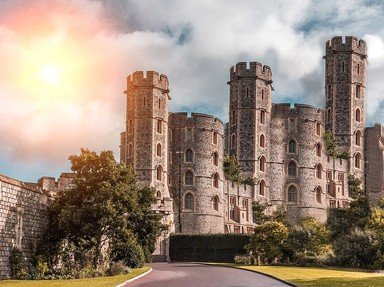Quiz Answer Key and Fun Facts
1. This castle is situated above a harbour on the Dee estuary in the northeast of Wales. The castle gives its name to one of the traditional counties of Wales. The name also refers to a variety of quartz.
2. This castle (situated in the West Wales region) is a highly unusual diamond-shaped concentric fortress. This castle is situated in a university town, and the structure was blown up and heavily damaged by Cromwell's parliamentary forces in 1649.
3. This castle is situated in the southeast of Wales, and stands on limestone cliffs above the River Wye. The castle is situated in an ancient market town, is the oldest surviving stone fortification in Britain and was originally called "Striguil", meaning river bend.
4. This castle was established by the Normans in 1093, and gives its name to another of the traditional counties of Wales. It was also the birthplace of the man who became Henry the Seventh, King of England.
5. This castle in mid Wales was turned into a luxury residence during the 17th Century. It contains formal gardens, landscaped grounds and a portrait of a member of the owning family by Sir Joshua Reynolds. The name was derived from one of the ancient kingdoms of Wales.
6. This castle in northwest Wales was the site of the investiture of Prince Charles as Prince of Wales in 1969. The design of the walls was based on those of the city of Constantinople. It lies adjacent to a walled town of the same name.
7. This castle in the south of Wales is both the largest in the principality and the second largest in Britain. This moated castle was built in a concentric style by Gilbert de Clare, mainly between 1268 and 1271. It has a famous leaning tower.
8. This Anglo-Norman castle was founded in 1106 and overlooks the Gwendraeth river in Carmarthenshire. It was famously used in the opening scene of the film "Monty Python and the Holy Grail".
9. This castle in the northwest of Wales was begun in 1295 by the famous architect James of St George, but was never finished. The castle has been named as a World Heritage site, and the adjacent town has a surviving medieval courthouse and gaol.
10. This castle is situated on the site of a Roman fort built in 55 AD to control the tribe known as the Silures. The Norman shell keep is the only part of the castle that has not been extensively altered. The 3rd Marquess of Bute commissioned architect William Burgess to make his unusual renovations in the 19th Century.
Source: Author
mjws1968
This quiz was reviewed by FunTrivia editor
gtho4 before going online.
Any errors found in FunTrivia content are routinely corrected through our feedback system.

